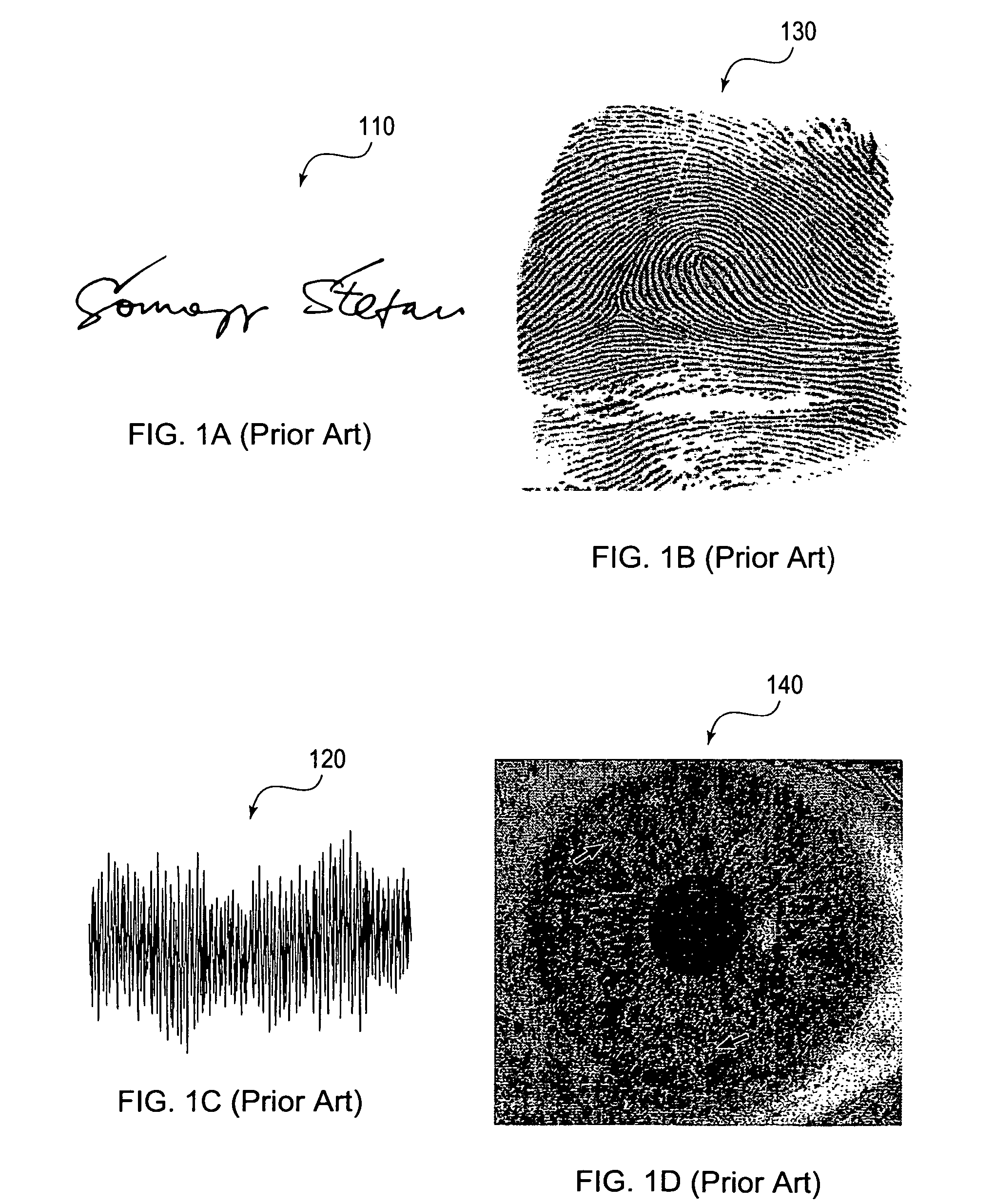Fingerprint biometric machine representations based on triangles
a fingerprint and machine representation technology, applied in the field of image processing, can solve the problems of user's very few options, public perception of invasion of privacy, general, and suspicious of the central storage of information associated with individuals
- Summary
- Abstract
- Description
- Claims
- Application Information
AI Technical Summary
Problems solved by technology
Method used
Image
Examples
Embodiment Construction
[0062] For many applications, user authentication is an important and essential component. Automated biometrics can provide accurate and non-repudiable authentication methods. In the digital world, the same advantage comes with several serious disadvantages. The digital representation of a biometrics signal can be used for many applications unbeknownst to the owner. Secondly, the signal can be easily transmitted to law enforcement agencies thus violating the users' privacy. The present invention provides methods to overcome these problems employing transformations of fingerprint representations based on triangles to intentionally distort the original fingerprint representation so that no two installations share the same resulting fingerprint representation.
[0063] The present invention describes revocable fingerprint representations, specific instances of revocable biometric representations, also referred to herein as “anonymous” biometrics”. Unlike traditional biometric representat...
PUM
 Login to View More
Login to View More Abstract
Description
Claims
Application Information
 Login to View More
Login to View More - R&D
- Intellectual Property
- Life Sciences
- Materials
- Tech Scout
- Unparalleled Data Quality
- Higher Quality Content
- 60% Fewer Hallucinations
Browse by: Latest US Patents, China's latest patents, Technical Efficacy Thesaurus, Application Domain, Technology Topic, Popular Technical Reports.
© 2025 PatSnap. All rights reserved.Legal|Privacy policy|Modern Slavery Act Transparency Statement|Sitemap|About US| Contact US: help@patsnap.com



